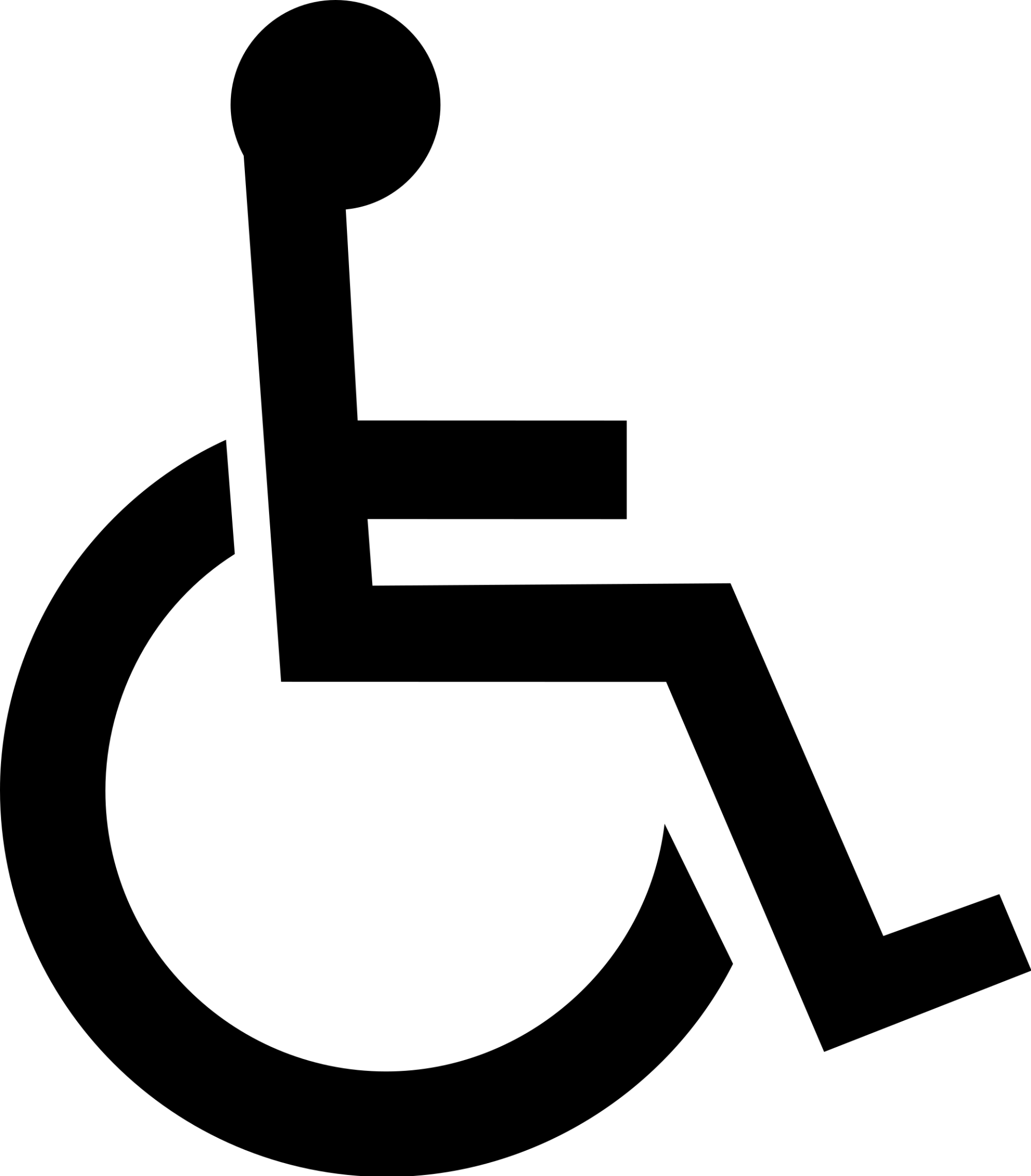Downsizing Tips Every Senior Should Know
October 27, 2020

Whether it’s to simplify life, reduce monthly expenses, expand social opportunities, be closer to family, or address changing health needs, most seniors eventually choose to downsize from a house to a smaller floor plan.
According to AARP, downsizing tends to be the most successful when someone is making a conscious decision about how they want to live their life going forward. Instead of procrastinating the decision or waiting until a health emergency, seniors that move when they’re still active will generally have greater options to choose from—and better long-term outcomes as well.
To make the decluttering and downsizing process as simple as possible for older adults and their loved ones,
STEP 1: Determine the area and size of your new home
Are you seeking a smaller house or condo, or planning a move to a senior living community? Each living option (as well as zip code) will influence the square footage and budget that’s most appropriate for your situation.
STEP 2: Declutter and organize
It’s amazing the number of things we can acquire over the course of a lifetime. Go into the process prepared to part with plenty, but giving yourself room to keep the items that mean the most. The most straightforward way to sort through items is to ask yourself these four questions: 1) Do I need it or want it? 2) Does it have sentimental value? 3) Do I use it often? 4) Do I have another item that performs the same function?
STEP 3: Find new homes for the items you aren’t keeping
Moving expenses are often substantial so yard sales are a great way to make some extra money to help fund your move. For any unwanted items that still remain, many charities and non-profit organizations are willing to pick up boxes directly from your home. You’ll also feel good knowing that your donation made a difference for someone in need.
STEP 4: Prepare for the move
After you have taken the time to declutter and get rid of unwanted items, you can start to think about packing and making the move to your new residence. To streamline the process, many people hire a senior move manager or full-service moving company to make the packing and relocation experience as stress-free as possible. Additionally, some senior living communities, such as Chestnut Square at The Glen, offer a move assistance program for new residents.
STEP 5: Say goodbye to the house
Just as you’ll be saying goodbye to many possessions, the time will come to say goodbye to the house as well. You’re closing a major, important chapter in your life and it’s OK to feel sad, especially if you’ve suffered a loss. However, don’t lose sight on the exciting next step that lies ahead.
STEP 6: Make the transition
No matter where you’re headed, remember that your new home won’t feel like home right away. Bring in the most important items first that will make you feel especially comfortable. If possible, move-in day should be a family affair, even if you already have help from a professional moving service. Family members can stop by to bring food and refreshments, troubleshoot issues, and make the occasion an even happier one!
For more information about Chestnut Square’s vibrant senior living community and complimentary “MOVE-ASSIST” program, please visit
www.ChestnutSquare.info
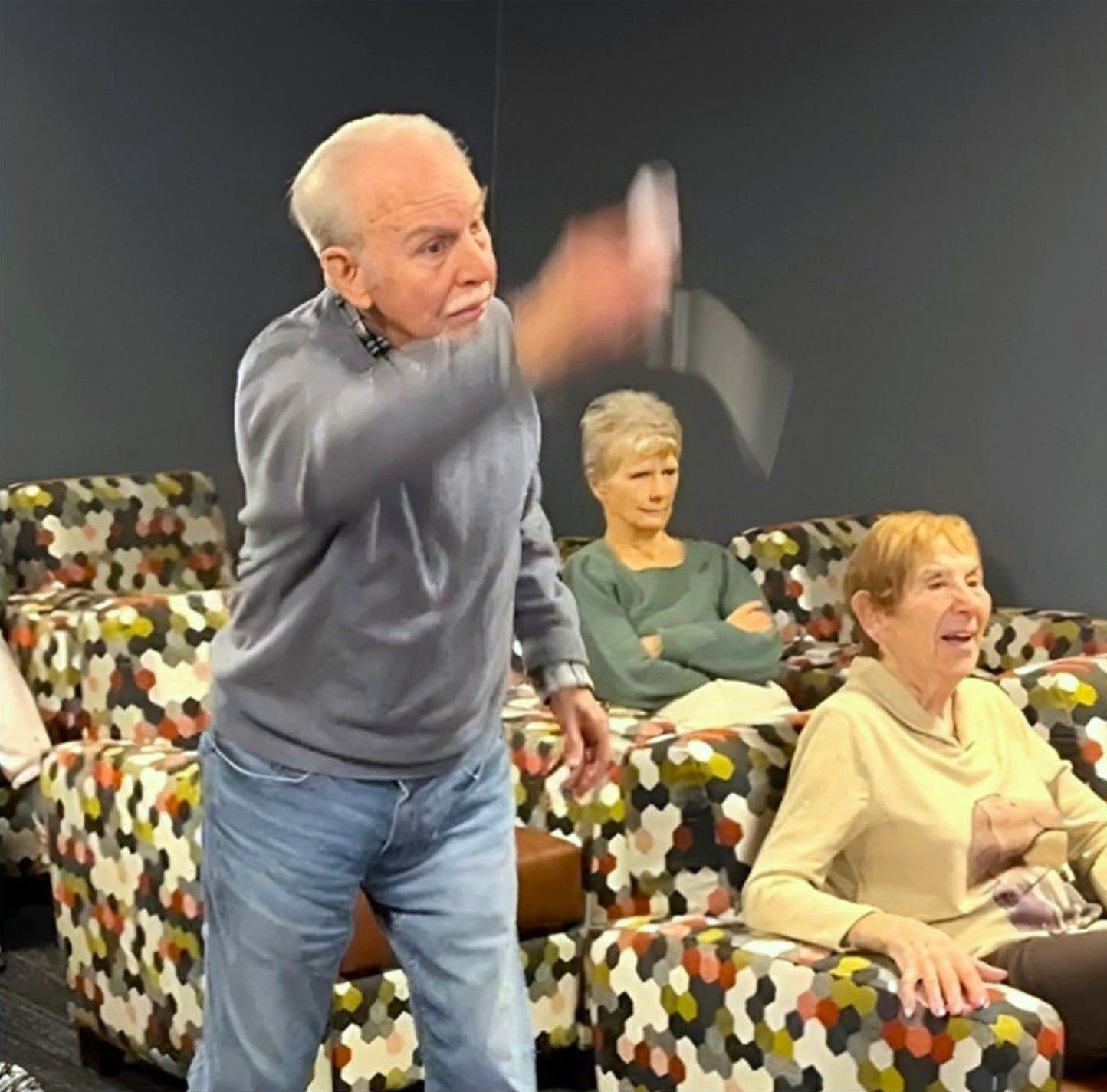
PICTURED ABOVE: Resident Royce M. rolls the famous strike in the viral video that has taken the internet by storm. When selecting a retirement community, seniors often cite the ability to maintain an active lifestyle as the most important factor in their decision. That’s why at Chestnut Square at The Glen, our residents love our extensive calendar of programs and events... including Wii Sports! During a recent gathering of our Wii Bowling Club in our theater room, we filmed a short video of resident Royce M. rolling a strike and receiving enthusiastic cheers from everyone in the room. After we shared the video on Chestnut Square’s Instagram page, it quickly struck a chord with the public and has already received 32 million views! ESPN also re-posted the video on their social media channels, and various online influencers have shared the video as well. The comments have been overwhelmingly positive with sentiments such as "Gramps has still got it!” “This looks like so much fun," "This is so wholesome," "Sign me up!” and “This is what I want my retirement to look like.” Royce and his wife, Nancy, have certainly appreciated the outpouring of support, unexpected as it may be. “We get a kick reading all the comments,” Royce says. “Some of the people think I’m a lifelong bowler, but the truth is, I rarely played until we moved to Chestnut Square and we discovered their Wii Bowling Club. Now Nancy and I look forward to it every week.” Jamie Wolfe, Chestnut Square’s Director of Life Enrichment, shared her thoughts about the viral nature of the video. “I think people are drawn to it because our residents are so authentic and friendly,” she explains. “Their happiness is genuine—and regardless of the event, everyone in our community really enjoys being together, trying new things, and sharing a laugh. It makes Chestnut Square a very special place.” To learn more about Chestnut Square at The Glen, please call (847) 998-1118 or visit www.chestnutsquare.info
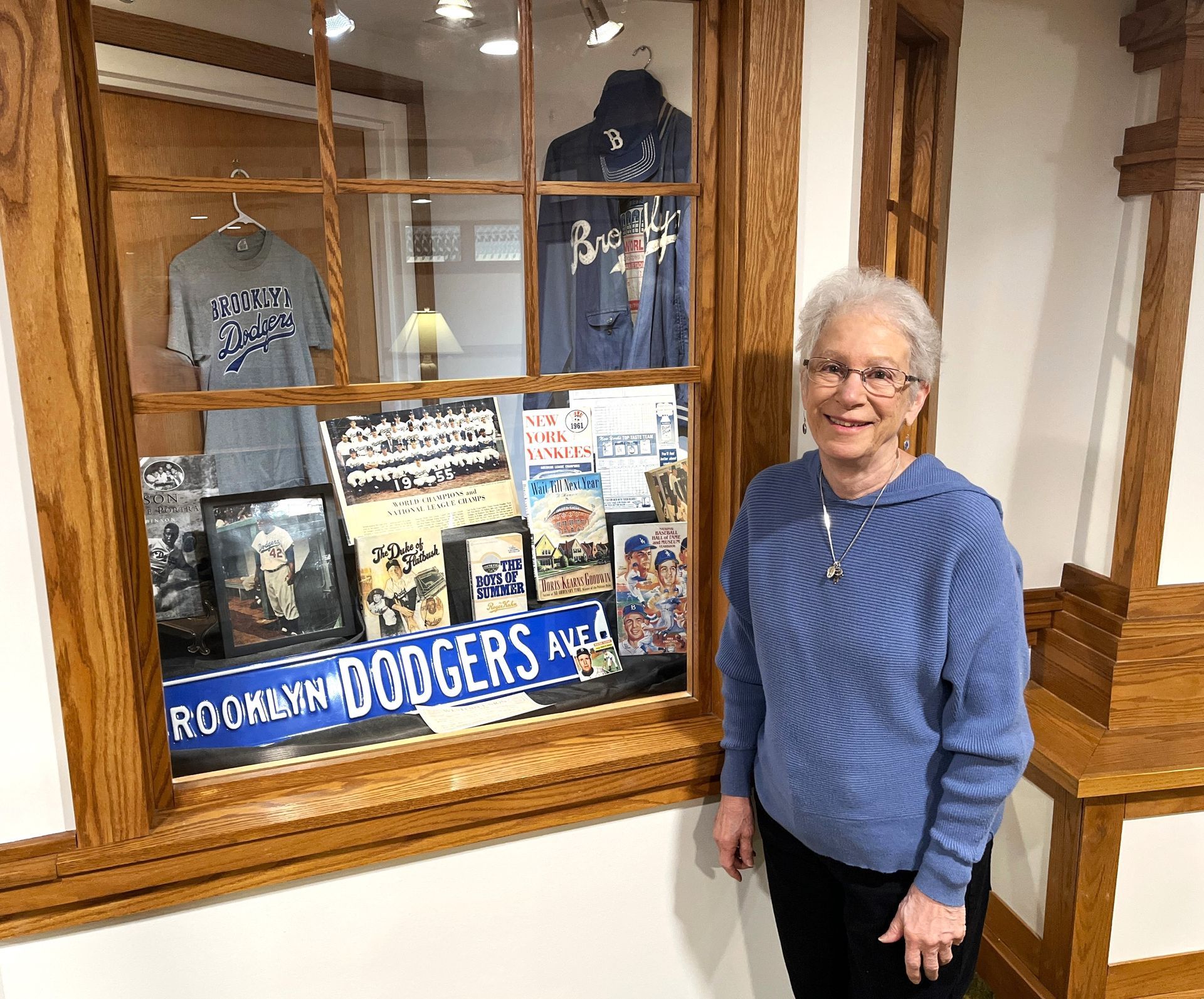
In honor of Jackie Robinson Day—when all MLB players wear the number 42—Chestnut Square resident Connie Fendley is displaying her amazing collection of Brooklyn Dodgers memorabilia in our community’s showcase! “I grew up in Westfield, NJ, and at that time, you were either a Dodgers fan or a Yankees fan,” Connie explains. “I was drawn to the Dodgers because of Jackie Robinson, and even though I was only eight when Branch Rickey signed him to the club, I was influenced by how Jackie endured and how the team rallied around him.” Connie vividly remembers going to her first baseball game at Ebbets Field and marveling at the green grass since she had only watched baseball on black and white TV until then. “From the late 1940s to mid-1950s, the Dodgers and Yankees faced each other a lot in the World Series, and the Yankees seemed to always win,” she recalls. “But finally in 1955, the Dodgers won...and Jackie got his championship. Baseball was my greatest joy, and I loved going to the games with my dad, taking photos, and scorekeeping.” Even though Connie was devastated when the Dodgers moved to Los Angeles in 1957, she still cherishes all her wonderful memories of the team in Brooklyn. “I’ll never forget meeting Jackie Robinson after he retired when he was a guest speaker at my church,” she says. “It makes me very happy that Major League Baseball honors him with a special day every April.” Thank you, Connie, for sharing your story and incredible collection with our community! To learn more about Chestnut Square at The Glen, please call (847) 998-1118 or visit www.chestnutsquare.info

Chestnut Square at The Glen was thrilled to host a surprise baby shower for our remarkable Dining Services Manager, Lana Manojlovic. Currently eight months pregnant, Lana is about to welcome a new baby boy! Residents and staff couldn’t wait to share their excitement as they presented Lana with a beautiful display of gifts. The event also included some baby-themed games, delicious cake, and fun opportunities to pass around the microphone and share personal parenting advice with the expectant mother. Among the many heartfelt comments, here were just a few: Lilly C. offered this emotional message. “Hold him from the first day that you have him, because they grow up so fast.” Kathy C., remembering her own sleepless nights as a mother, shared some practical advice. “Do not sleep in the same room as the baby since you’ll be too focused on every single sound that they make. Whenever the baby needs you during the night, he will be sure to let you know.” Elizabeth A., having seen friends and family navigate the role of technology in their children’s lives, revealed a big smile as she recommended, “When your son starts asking to have a cell phone, the answer is no until YOU decide.” This uplifting gathering—illuminating the close bonds shared in the community between residents and staff—made a lasting impression on Lana, who will soon be taking a maternity leave before returning to her position at Chestnut Square. “Thank you so much for sharing this special day with me,” Lana told the crowd as she held back tears. “I will never forget the incredible generosity and kindness you’ve shown me. And I can't wait to introduce the new baby to all of you.” To learn more about Chestnut Square's vibrant senior living community, please call (847) 998-1118 or visit www.chestnutsquare.info
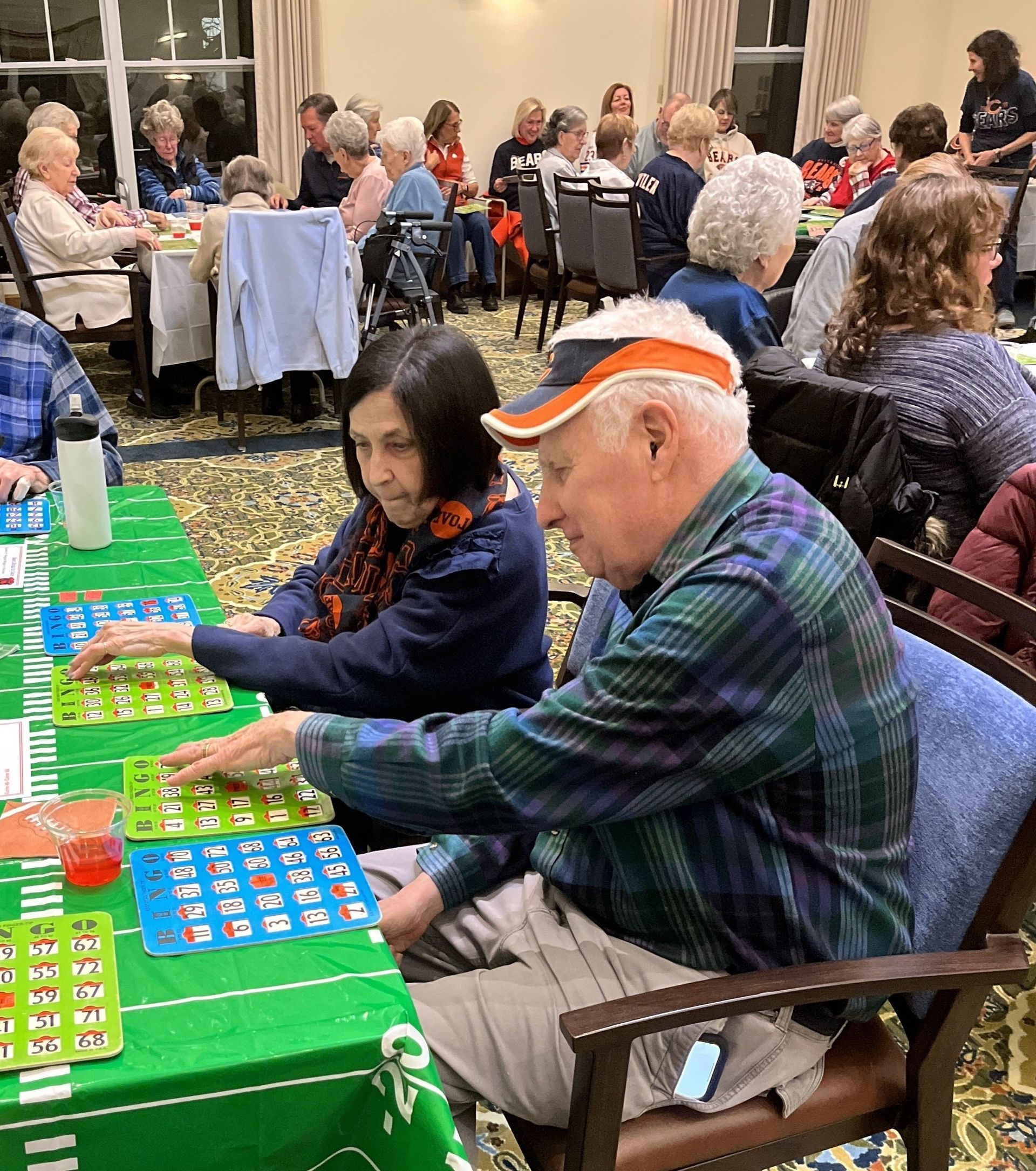
TOP PHOTO : Standing next to the portrait of Katie Nagle are, from left to right: George McCaskey, Chairman of the Chicago Bears; Vera Lampe, CEO of Chestnut Square at The Glen's parent company Bethany Methodist Corporation; Barb McCaskey; Joan Cramer, sister of Katie Nagle; and Scott Cramer. LOWER LEFT PHOTO : Chestnut Square residents and guests enjoy one of the Bingo games of the event. LOWER RIGHT PHOTO : The portrait of Katie Nagle taken during one of her many visits to Chestnut Square. Chestnut Square at The Glen, an independent senior living community in Glenview, IL, was honored to host a special Bingo Night fundraiser with the Chicago Bears front office in memory of Katie Nagle, the community’s beloved Bingo caller. An executive assistant at Halas Hall for 22 years, Katie also had a deep connection to Chestnut Square that started when her mother, Marge, was a resident. After Marge’s passing, Katie continued to visit Chestnut Square to keep in touch with her mother’s friends and to call the popular Bingo games. “Katie was one of the sweetest souls you could ever meet,” shared Vera Lampe, CEO of Chestnut Square’s parent company Bethany Methodist Corporation. “When she passed away in 2024 after a long illness, we wanted to remember her selfless legacy and celebrate her life. That’s why we decided to host a special event that raised funds for Bears Care, the charitable arm of the Chicago Bears which supports disadvantaged children and families in the Chicago area.” In attendance were Chestnut Square’s residents and staff, the Nagle family, George and Barb McCaskey, and numerous members of the Bears front office. "Everybody loved Katie, and she was friends with everyone at Halas Hall,” said George McCaskey. “She was one of those rare people that whenever you came into contact with her, you always had a better day." The fundraiser was held on January 30 and featured various Bingo games including a winning card that spelled the letter “N” in honor of Nagle, Katie’s last name. Prizes were generously provided by the Bears organization. Katie’s sister, Joan Cramer, was especially touched by the program and offered this heartfelt message on behalf of the entire Nagle family. “Katie had a gift of bringing people together, and her kindness and genuine interest in people's lives set her apart,” Joan explained. “Her Bears family knew about her friends at Chestnut Square and vice versa. Bringing these two groups together for an evening of ‘Bears Bingo for Katie’ was a testament to how Katie is still spreading joy. Her kindness continues to flow through people.” An independent senior living community, Chestnut Square at The Glen features spacious 1 and 2-BR floor plans, all-inclusive services and amenities, restaurant-style dining, an extensive calendar of programs and events, and on-site homecare if ever needed. To learn more about Chestnut Square, please visit: www.chestnutsquare.info To learn more about Bears Care and their charitable initiatives, please visit: https://www.chicagobears.com/community/bears-care

PICTURED ABOVE: Chestnut Square at The Glen's gazebo courtyard blanketed with fresh snow. As we hunker down for another winter, you may find yourself thinking about how much longer you want to manage the responsibilities of homeownership—including shoveling snow, ongoing maintenance, and maintaining a property through the coldest months. If you’ve been considering a move to a senior living community, now is the perfect time to start touring the options so you can make the transition by spring or summer, when warmer weather will make the move easier. Here’s why winter is an ideal time to get a jump on the process: Planning Ahead for a Smooth Transition Moving to a senior living community is a significant decision, and one that shouldn’t be rushed. Selecting your community now will give you plenty of time to make thoughtful choices and prepare for the transition. You’ll have time to sell your house, organize your belongings, and ensure a smooth move come spring or summer. You’ll also be able to avoid the chaos of last-minute decisions and a rushed experience. Say Goodbye to Winter Woes A visit to Chestnut Square now will highlight exactly what you’ll be leaving behind. For many homeowners, winter means dealing with freezing pipes, ice damming, salting the driveway, and countless other stresses. Instead, you can start imagining a maintenance-free lifestyle surrounded by new friends. Avoid Unnecessary Delays One of the most frustrating things about procrastination is that we usually know the task we’re avoiding would actually make us feel better once we complete it. While it’s tempting not to think about your next move during the colder months, losing valuable time now could make it harder to move later. Spring and summer are busy seasons for senior living communities, with many people placing deposits as the weather warms up. Waiting until the last minute could mean fewer floor plan choices. Take Advantage of Our Move-Assist Program We realize that moving—and downsizing—are a lot to think about, but we make it easier for our future residents. Our team has put together a comprehensive moving guide that includes helpful tips, checklists, and a list of reputable senior move managers in the area who can assist with downsizing, organizing, packing, and delivery. For a limited time, Chestnut Square is also offering a Move-Assist credit of up to $3,500 that can be applied toward any of your moving expenses. To learn more and schedule a personal tour, please call (847) 998-1118 or visit www.chestnutsquare.info

As we ring in the New Year, Chestnut Square at The Glen extends our warmest wishes to you and your loved ones! In 2024, our community enjoyed an extensive lineup of fun programs and events, celebrated holidays and milestones together, expanded wellness initiatives, and welcomed many new residents. And with Phase I of Chestnut Square's Campus Refresh Project completed—and Phase II in progress—our retirement community is more beautiful than ever. Complementing our iconic prairie-style architecture, we've made stylish and technological upgrades to the lobby, dining room, wellness center, café, library, chapel, and various other spaces. As you make your New Year’s resolutions, we encourage you to think about how you want to spend the next chapter of your life. Instead of dealing with all the uncertainties and constant upkeep of home-owning, imagine a vibrant, maintenance-free lifestyle surrounded by new friends. Featuring spacious floor plans, all-inclusive services and amenities, a signature dining program, a diverse calendar of programs and events, on-site homecare services if needed, and an unmatched location in the heart of The Glen, it’s no wonder why so many people have decided to make Chestnut Square their new home. We invite you to visit our community and see for yourself what makes Chestnut Square so special. In 2025, it’s time to finally treat yourself to the rewarding lifestyle you deserve! To learn more about our community's holistic approach to senior well-being, please call (847) 998-1118 or visit www.chestnutsquare.info
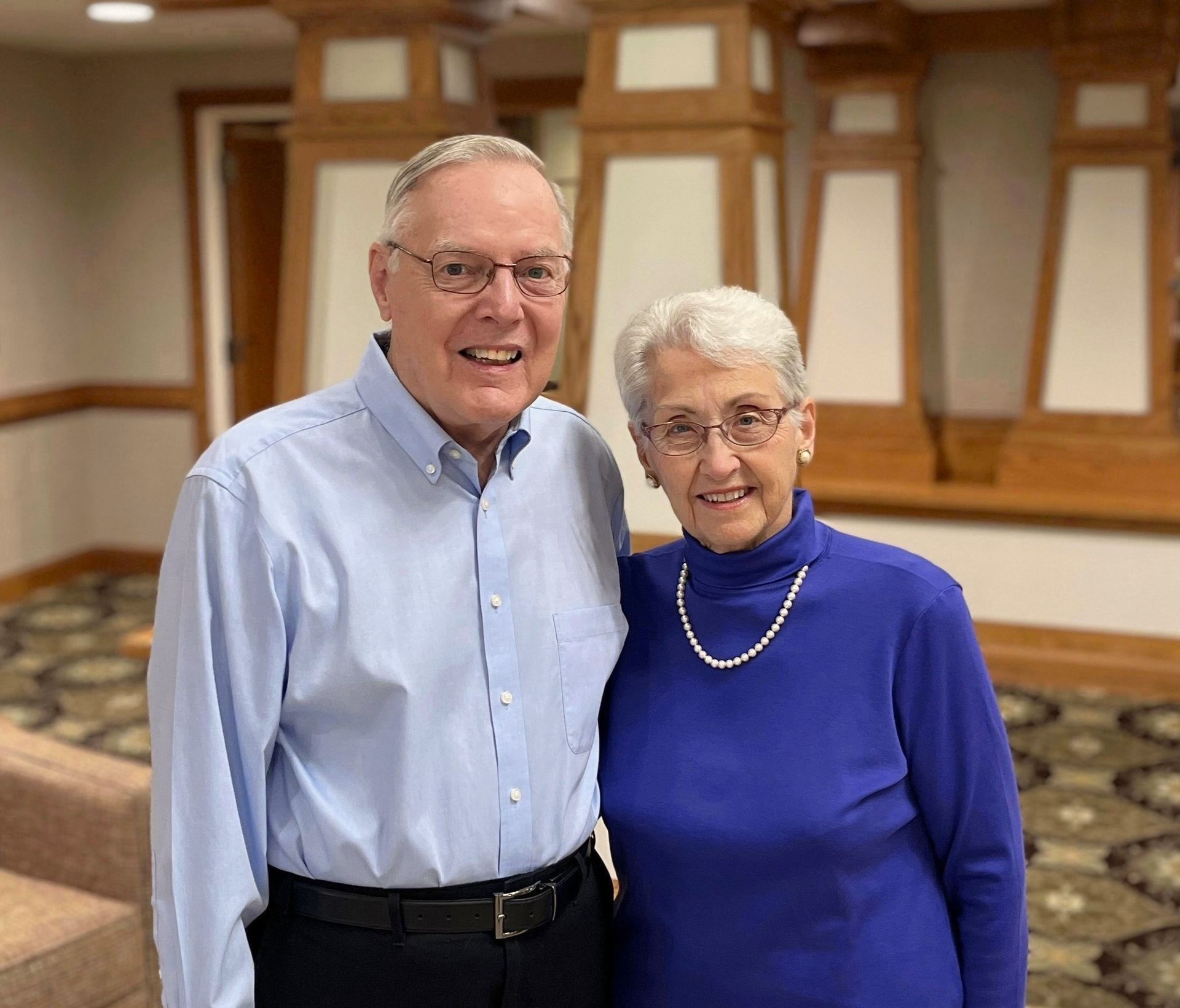
PICTURED ABOVE: After 54 years in Northbrook, Allan and Marilyn TeRonde recently moved to Chestnut Square at The Glen. For Allan and Marilyn TeRonde, music has been a shared joy in their 61-year marriage—from their first meeting as students at Carroll College in Waukesha, WI, to their recent move to Chestnut Square at The Glen. “Growing up, my mother loved to sing and music was always in our house,” Allan recalls. “I started playing the piano at age seven...and I still play today.” Earning a B.S. in Music Education, he started his career teaching elementary and junior high school music, before transitioning to H.R. management at American Grinding and Machine in Chicago—where he would eventually become President. Marilyn, who earned her B.S. in Nursing, worked in the medical-surgical field before becoming a full-time mom. She shared Allan’s love for music, and together, they sang for decades in numerous church choirs as they raised two loving daughters. Allan also enjoyed singing in the Northbrook Barbershop Chorus, and most recently, with the Glenview Senior Center’s Starlite Singers. “When we started researching retirement communities, we weren’t sure what to expect since we had lived in the same house in Northbrook for 54 years,” Marilyn chuckles. “But as soon as we visited Chestnut Square, we fell in love with the community.” The TeRondes were also able to customize their new 2-BR floor plan with various finishes, including the exact same yellow paint color they had in their home. “Right after we moved in this summer, our grandkids visited to see the new place,” Allan says. “Their faces lit up as they told us, ‘Your apartment looks and feels just like the house!’” Since becoming residents, Allan has joined the community’s Treblemakers singing group and continues to play the piano at various events. And while Marilyn no longer sings, she loves attending all of the on-site concerts and guest lectures, and recently joined the fiction book club, too. “Every person we’ve encountered here—residents and staff alike—has welcomed us with open arms,” she says. “We’ve made so many new friends already...we’re thrilled that we found Chestnut Square.” To learn more about our community's holistic approach to senior well-being, please call (847) 998-1118 or visit www.chestnutsquare.info

At Chestnut Square, we understand that the power of dance can bring people together, boost energy, and foster community. Whether you’re an experienced dancer or a complete beginner, our senior living community hosts a variety of themed celebrations and concert events where residents can show off their moves. Dancing is more than just a physical activity; it’s an opportunity to socialize, connect, and celebrate the joy of movement with friends. Multiple studies have also shown that it improves coordination, heart health, and emotional well-being. For our residents and guests, we create an environment where everyone feels welcome to join in. "My wife and I have always been interested in dancing, and since moving to Chestnut Square, we're able to dance more than we ever did in the past," shares Gideon F. "We love attending the dinner dances, the Crystal Galas, the New Year's Eve parties, and especially the outdoor concerts in the gazebo courtyard. There's classical music, big band, jazz, rock and roll...something for everyone." Located in the heart of The Glen, Chestnut Square features spacious 1 and 2-BR floor plans, restaurant-style dining, all-inclusive services and amenities, on-site homecare if ever needed, and a 100% refundable entrance fee. To learn more about our community's holistic approach to senior well-being, please call (847) 998-1118 or visit www.chestnutsquare.info
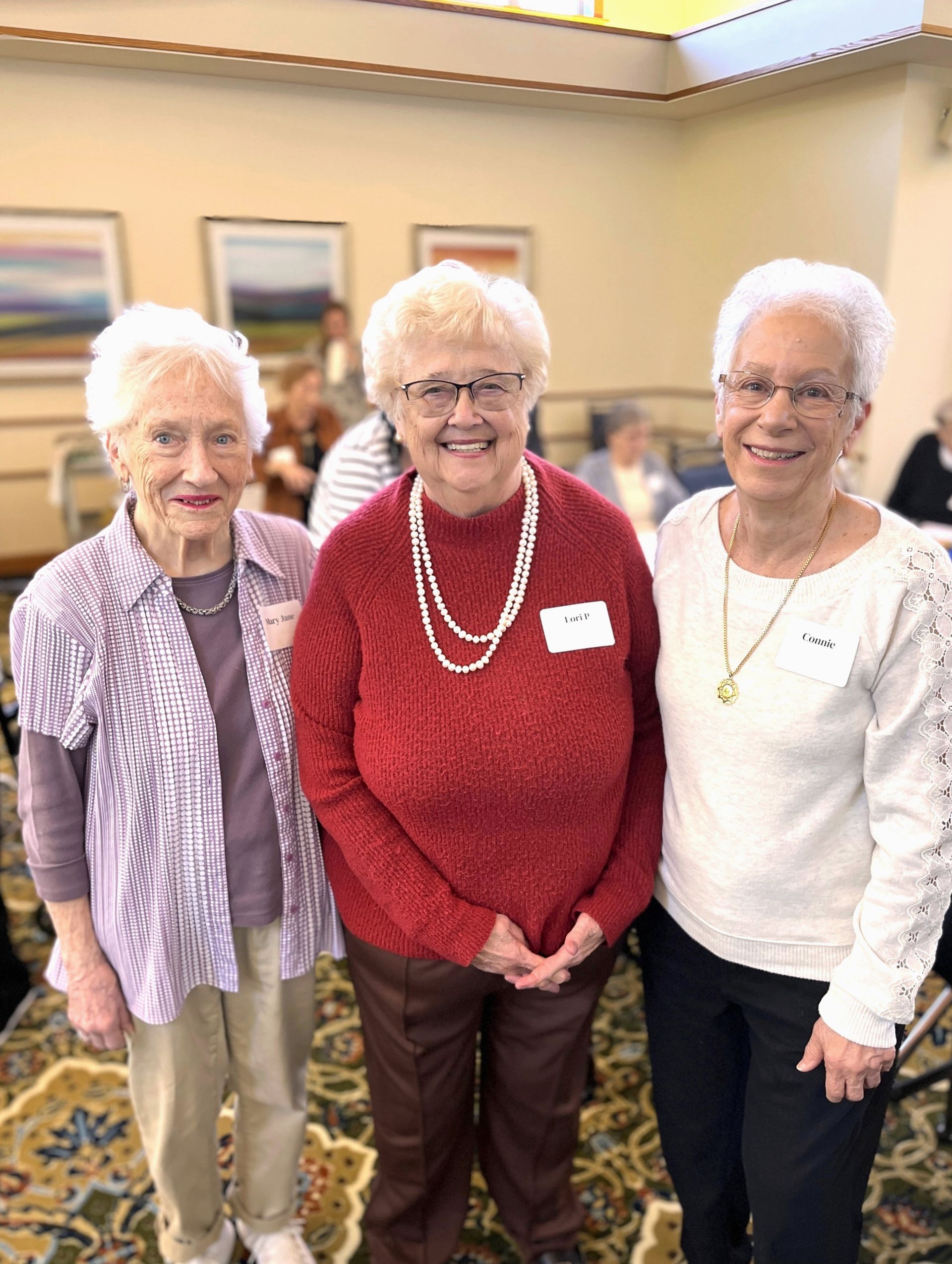
PICTURED ABOVE: Floor representatives Mary Jane K., Lori P., and Connie F. attend a community mixer. At any age, moving into a new home is an experience that’s usually filled with excitement—and also a fair amount of nerves. What will my new neighbors be like? How long will it take to get settled in? Will I make new friends? With more than two decades of experience, Chestnut Square understands this well and that’s why we place such an emphasis on making sure every new resident receives a comprehensive welcome from the community. Each year, Chestnut Square elects six resident floor representatives to serve as ambassadors of the community, with each covering a different section of the building. "When new residents move in, they receive a tray of freshly baked cookies from the Chestnut Square kitchen, as well as a personal visit from their floor ambassador,” explains Lori P., Chair of the Floor Reps Committee. “We’re here to answer their questions, invite them to join us for lunch or dinner, and introduce them to all the wonderful people in the community. This isn't just on the day they move in...we enjoy staying in regular contact." Chestnut Square also hosts lively floor mixers where residents can get to know their fellow neighbors better. Passing around the microphone is a highlight at these gatherings as residents introduce themselves and share interesting or funny stories based on prompted questions from cards placed on the table. “Every person we’ve encountered—residents and staff alike—has greeted us with open arms,” says Allan and Marilyn T., who moved to Chestnut Square in July. “Thanks to Lori, our floor ambassador Connie, and various other neighbors, we’ve already made a bunch of new friends. And we’re attending a lot of great programs and events each week. When you live in the same house for 54 years and then move, you never quite know what to expect. We’re happy to report that Chestnut Square has felt like home since day one.” To learn more about our community's holistic approach to senior well-being, please call (847) 998-1118 or visit www.chestnutsquare.info

Located in the heart of The Glen, Chestnut Square's beautiful campus is truly a sight to behold in autumn as Mother Nature shows off its incredible colors. This time of year is always extra meaningful for our residents and friends, and we'd love to share it with you as well. In addition to our majestic outdoor scenery, our community enjoys decorating the interior common spaces throughout the year. Many of the residents at Chestnut Square also adorn their apartment doors and ledges with personal touches each season, and everyone brings their own unique style. “Whenever I walk through the community, I stop to admire all the attractive decorations of my neighbors," explains resident Sheila R. "It just puts you in a good mood and makes the community feel extra special. And when I return to my apartment and look out my window, the views of the campus are equally stunning!" Festive gatherings also foster connections in the community. Themed parties, on-site concert events, guest lectures, art classes, crafting sessions, and group outings promote new friendships that last well beyond the autumn months. If you would like to schedule a tour of Chestnut Square at The Glen and experience the beauty and warmth of our community, please call (847) 998-1118 or visit www.chestnutsquare.info


